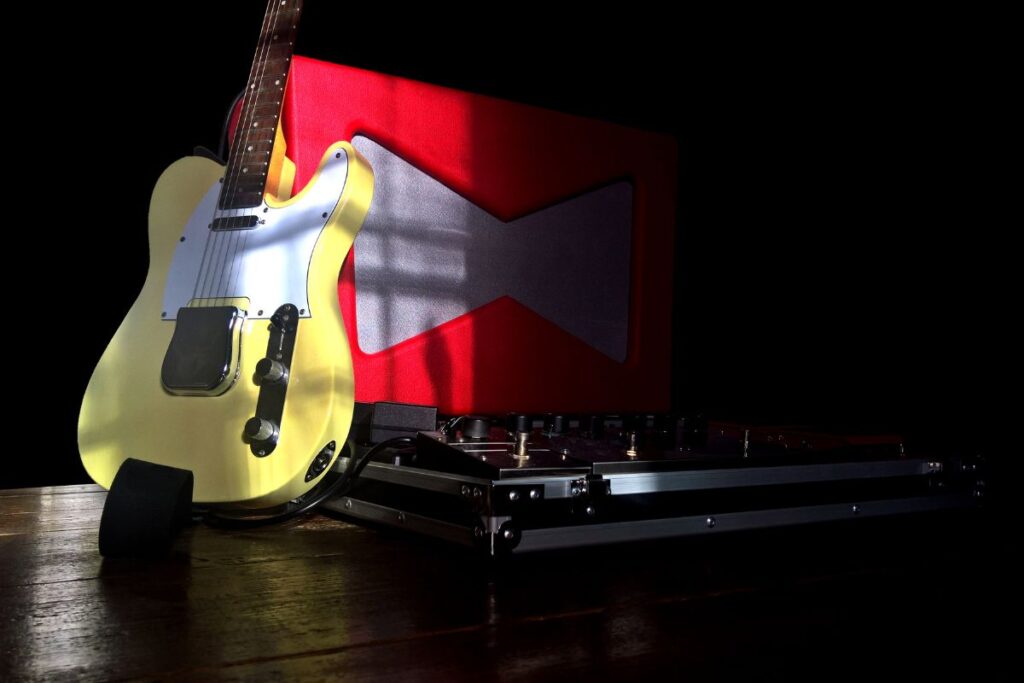In the space of a few decades, pre-aged guitars have gone from industry joke to high art. A large part of that turnaround has been down to the work of Tom Murphy, whose work has elevated what was once a (quite literally) scattergun process into something more akin to historical restoration.
Murphy operated independently for many years, but as of 2020 was chosen to head up Gibson’s specially created Murphy Lab, sharing his innovative tools and techniques with a small crew of hand-picked employees.
The Custom Shop instruments they finish have become revered for their convincingly vintage look and feel, and many players will swear they sound better for the treatment, too.
Now, in collaboration with Gibson’s Bozeman, Montana “craftory”, the Murphy Lab is expanding its sights to take in a range of five pre-aged, period-correct acoustic models, including a 1933 L-00 parlour guitar, 1942 Banner J-45 and Jumbo Vintage, a 1957 SJ-200 flat-top and a 1960 Hummingbird.
This time, though, it’s not simply about perfecting the belt-buckle rash. As Murphy maintains, “we want all the attention paid to the sound”.
Could you provide some background on the work the Murphy Lab has been doing since it opened?
“Well, I’ve been doing some version of ageing to the finish of historic guitars for 25 years. As of 2020, when I came on full-time inside the Custom Shop, I developed a new method, which involves real checking of the lacquer, instead of the artificial checking I’d done for a long time. And it really just took the whole concept to another level – I was very excited about it.
My staff are craftsmen who I’ve taught methods of authentic arm wear, belt wear and distressing
“Gibson approached me about working with a group inside the factory, and the staff and I brought in that process. So my staff are craftsmen who I’ve taught methods of authentic arm wear, belt wear and distressing.
“Now there’s no more ‘Murphy aged’, it’s all Murphy Lab and there are four levels of ageing: ultra light, light, heavy and ultra heavy, and the distressing progresses through those levels. And, of course, now we have artist projects, where we copy the actual product: Greeny, the Kirk Hammett project [for instance].
“So the Lab has become really convenient as a way to frame that concept of ageing. Even though my name’s attached to it, I don’t have to do every single guitar. I look at every guitar, I inspect every guitar, I approve them, but we work as a team. So that’s the Murphy Lab.”
What state are the guitars in when they arrive at the Murphy Lab? Are they made in order for you to age them?
“We have one very important element and that is our proprietary finish. That finish has to go on our instruments or we can’t use them in the Lab. It allows us to execute the different procedures that make a guitar look old. It wears easily. We don’t peel paint off any more – we sort of chip it off and rub it and burnish the edges.
I didn’t do all the work: mother nature did a key part of it. So I’m super proud of what we’re able to do now
“When I was finishing the first Greeny of this Brazilian run, I was standing over the guitar and I said to Cesar [Gueikian, Gibson president and CEO], ‘That’s the best work I’ve ever been involved in.’ Meaning, I didn’t do all the work: mother nature did a key part of it. So I’m super-proud of what we’re able to do now.
“I appreciated getting to do what I did for all those years [before], but I knew for a fact every bit of it was artificial. I used to take a new guitar with a new finish and try to make it look old. Now I take a new guitar and put an old finish on it, because it responds like an old finish. It’s sort of fragile, but it feels great, feels old and allows us, in my estimation, much more authentic and realistic features that represent age.”
You’ve just unveiled the first Murphy Lab acoustics. What challenges did the acoustic line present compared with the electrics?
“It was thought early on [with the Murphy Lab], ‘Oh, we could do the acoustics!’ But in my mind, it was like, ‘Well, wait a minute. It’s not the same animal.’ Because some of the things we do to [an electric] guitar, I didn’t know if an acoustic guitar would really appreciate that!
Every time we put a jam or a nick in a guitar, it weakens the finish, and the checking will sort of come out of there
“But a couple years ago, they sent down a few pieces from Montana [Gibson’s acoustic facility] and I sort of carefully painted them, applied the finish and did some distressing to a J-45. I will say this: every time we put a jam or a nick in a guitar, it weakens the finish, and the checking will sort of come out of there.
“So I did that to the J-45 and the wear looked great, but then people started playing it and we realised how great it sounded. We determined, ‘Boy, with that checked finish, the acoustic guitar – which is a box that vibrates – really rings.’


